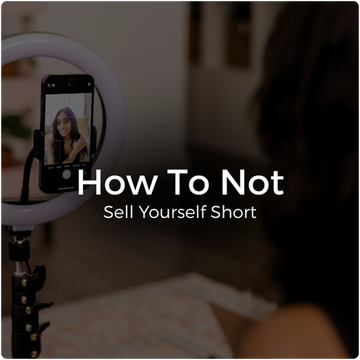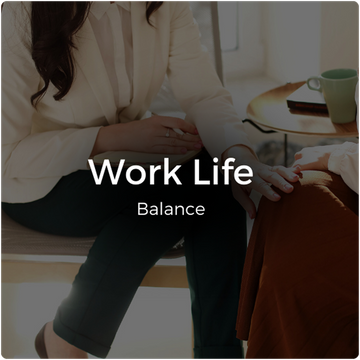The Business Side of Beauty: What Every Self-Employed Makeup Artist Needs to Know
When you dream of being a makeup artist, it’s all about the creativity—creating stunning looks, connecting with clients, and building your reputation in the beauty world. But what about the business side of things?
Taxes, legal obligations, and financial planning may not be the glamorous part of your journey—but they are essential if you want to run a successful (and sustainable) makeup artistry business.
Here’s your no-fluff, step-by-step guide to setting yourself up as a self-employed MUA in the UK—let’s get you confident, compliant, and thriving.
Step 1: Registering as Self-Employed
As soon as you earn even a small amount from your services, you’ll need to register as self-employed with HM Revenue & Customs (HMRC).
✅ Why it matters: It keeps you on the right side of the law and lets you access tools like your Unique Taxpayer Reference (UTR), which you’ll need to file your taxes.
This part is quick to do online—just don’t put it off!
💡 Already taking steps to grow your MUA business? Consider joining the ISOCLEAN Pro Programme to access ongoing professional support, free education resources, and pro discounts for navigating both beauty and business.
Step 2: Understand Your National Insurance Contributions (NIC)
Once you’re self-employed, you’re responsible for your own NICs:
-
Class 2 NIC: Flat weekly rate (~£3.45 per week)
-
Class 4 NIC:
-
9% on profits between £12,570 and £50,270
-
2% on anything over that
-
Keep these in mind—they impact your state pension and benefits down the line.
Step 3: Track Income & Expenses Like a Pro
You have to keep accurate financial records. There’s no way around it. From payments received to money spent on tools, training, and travel—every transaction counts.
✅ Track:
-
Client payments
-
Product purchases
-
Travel and training costs
-
Receipts and invoices
📌 PRO TIP: Spreadsheets are great, but using accounting software can save time and stress.
✨ Want to learn how other MUAs stay organized? The ISOCLEAN Pro community forum is a great place to swap tips, ask questions, and get advice from fellow professionals 24/7.
Step 4: Claim Your Business Expenses
The good news? Many of your business costs are tax-deductible. That means they can reduce your overall tax bill. Win-win!
✔️ What you can typically claim:
-
Brushes, makeup, skincare, hygiene products
-
Professional courses or certifications
-
Travel costs to and from appointments
-
Business insurance
Hint: If you’re investing in hygiene tools that keep your kit safe and professional, those may be deductible too.
Step 5: Do You Need to Register for VAT?
Only if you earn more than £85,000 per year. If you’re not there (yet!), no worries—but keep an eye on your income in case things scale quickly.
If you do register, you'll need to charge VAT on your services and file quarterly VAT returns. A bit more admin, but manageable.
Step 6: Filing Your Self-Assessment Tax Return
Your tax return might feel intimidating at first, but it’s really just about gathering your numbers and following the prompts.
🧾 What to do:
-
Gather your income & expense records
-
Log in to your HMRC account
-
Fill in your personal and business details
-
Report your income and deductible expenses
-
Review, submit—and don’t forget to pay by 31 Jan
📌 Feeling overwhelmed? Joining a programme like ISOCLEAN Pro can help you stay focused on what you love—while having access to educational tools that simplify everything else.
Step 7: Insurance Is a Must
Things happen—spills, reactions, breakouts. That’s why public liability insurance is so important when working with clients.
✅ It protects you if:
-
Someone has an allergic reaction
-
You accidentally damage property
-
A client takes legal action
Optional but worth considering: Professional indemnity insurance.
Step 8: Paying Yourself
As a sole trader, you’re not on payroll. You simply withdraw profits as needed—but you still need to save for taxes!
📌 Best practice: Set aside 20–30% of your earnings in a separate account for tax season.
✨ P.S. ISOCLEAN Pro members benefit from an exclusive 50% off lifetime discount so you can put aside a less money each month for high quality salon products
Final Recap: Your Self-Employed Checklist
Let’s break it down one more time:
✅ Register with HMRC
✅ Pay your NICs
✅ Keep detailed records
✅ Claim your expenses
✅ Understand VAT
✅ Get insured
✅ Pay yourself responsibly
Running your MUA business like a boss means understanding both the artistry and the admin. It’s not always glamorous, but it’s what separates side hustles from sustainable careers.
💬 Got questions? Drop them in the comments or chat with others navigating the same path inside the ISOCLEAN Pro community—because no one said you have to figure it out alone.
Want more support as a beauty professional?
Join the ISOCLEAN Pro Programme for:
✨ Free access to exclusive education and resources
✨ 50% lifetime discount on industry-leading hygiene products
✨ A growing community of beauty pros offering 24/7 advice and guidance
It’s not just a membership—it’s your backstage pass to levelling up in beauty.
Let me know if you want this formatted for your blog platform, or tailored to a specific audience (e.g. bridal MUAs, salon-based artists, etc.)!






